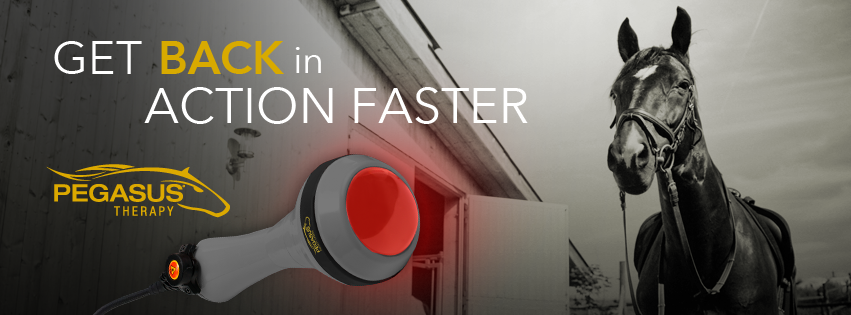Equine Therapy for Children: Emotional and Behavior Assistance Clarified
Equine Therapy for Children: Emotional and Behavior Assistance Clarified
Blog Article
Examining the Effectiveness of Laser Therapy in Equine Therapy for Injury Rehabilitation
The assessment of laser treatment's effectiveness in equine injury rehab rests on several elements, including recuperation time, pain mitigation, and tissue regeneration. Medical researches recommend remarkable improvements in conditions like tendonitis and osteoarthritis, connected to boosted cellular feature and raised ATP manufacturing. Vets regularly observe premium end results with laser treatment compared to traditional techniques, positioning it as a crucial aspect in equine treatment. Nonetheless, the necessity for constant surveillance and personalized treatment strategies can not be overemphasized. What particular clinical evidence supports these cases, and just how do vets implement these methods in practice?
Comprehending Laser Treatment
Laser therapy has come to be a crucial tool in vet medication, particularly in the treatment of equine problems. Understood for its non-invasive nature and efficacy, laser treatment entails the application of details wavelengths of light to promote cells fixing and minimize swelling. This healing method is significantly preferred for its capacity to accelerate the healing process in steeds experiencing a variety of musculoskeletal injuries and chronic conditions.
The primary device behind laser treatment is its capability to enhance cellular functions. When laser light penetrates the skin, it is absorbed by mitochondria, the powerhouse of cells, which results in enhanced production of adenosine triphosphate (ATP) This biochemical energy increase facilitates cellular repair service and regeneration. Furthermore, laser treatment promotes vasodilation, enhancing blood flow and oxygen delivery to broken tissues, therefore expediting recuperation.
In equine medicine, laser therapy is specifically helpful for conditions such as tendonitis, osteo arthritis, and wound healing. The strategy is admired for its pain-relieving residential or commercial properties, allowing equines to restore flexibility and function extra quickly. Vets also appreciate its very little negative effects compared to various other therapy methods, making it a dependable and secure choice for equine treatment.

How Laser Therapy Functions

Upon absorption, these photons set off a collection of biochemical changes, boosting mitochondrial function and bring about increased adenosine triphosphate (ATP) manufacturing. This increase in ATP increases cellular metabolic rate, advertising cells repair and regrowth. Furthermore, laser treatment modulates inflammatory actions by affecting cytokine degrees and minimizing oxidative tension, consequently minimizing discomfort and swelling.
One more significant facet of laser therapy is its role in boosting microcirculation. The treatment promotes vasodilation, enhancing blood circulation and oxygen delivery to broken tissues (Equine Therapy). This helps with the elimination of cellular debris and sustains the proliferation of fibroblasts and collagen synthesis, vital for injury healing
Medical Evidence
The efficacy of laser therapy in equine treatment has been corroborated via numerous professional studies, showcasing its therapeutic potential across a range of conditions. A study conducted by Turner et al. (2012) demonstrated that steeds treated with low-level laser therapy (LLLT) for tendon injuries displayed sped up recovery compared to those getting traditional therapies.
In a similar way, research by Johnson and coworkers (2015) focused on equine muscular tissue injuries, exposing that laser therapy substantially sped up muscular tissue fiber regeneration and reduced muscle mass stiffness. Clinical analyses have revealed that laser treatment can minimize persistent conditions such as osteo arthritis.
Veterinarian Insights

Vets likewise value the convenience of laser treatment. It can be used for a wide variety of problems, from shallow wounds to deeper musculoskeletal injuries. Dr. Emily Brown highlights its utility in treating problems like tendonitis and osteo arthritis, where standard treatments read this often fail. She mentions that laser treatment can be customized to the details needs of each horse, guaranteeing optimal end results.
In addition, vets value the capability to integrate laser treatment with various other treatment methods. This multimodal strategy can improve overall treatment efficiency, supplying an extensive solution for equine recovery. Such recommendations from experienced experts underscore the expanding approval and application of laser therapy in equine medication.
Practical Considerations
A vital facet of executing laser therapy in equine therapy involves understanding the sensible considerations that guarantee its effectiveness and safety and security. It is critical to choose the appropriate laser tool, as various kinds differ in wavelength, power, and infiltration deepness. Veterinarians need to be well-versed in these specifications to customize treatment procedures effectively to every injury kind
Furthermore, the regularity and period of laser therapy sessions require mindful planning to make the most of healing benefits while lessening any prospective damaging effects. Constant tracking of the steed's response to treatment can assist essential modifications in the treatment routine. Establishing a safe and controlled atmosphere throughout therapies is additionally important to stop unintended exposure to laser emissions, which could hurt both the equine and the trainer.
Educating and certification of workers providing laser therapy are vital to make certain correct strategy i thought about this and to copyright safety standards. Additionally, preserving precise records of each session, including laser settings and observed outcomes, is important for examining the general efficiency of the therapy and for making data-driven decisions.
Final Thought
Laser therapy has actually arised as an efficient modality in equine injury recovery, providing significant benefits in recovery time, discomfort relief, and cells healing. For optimum results, continual tracking and individualized therapy protocols continue to be important in leveraging the complete capacity of laser treatment in equine care.
Report this page